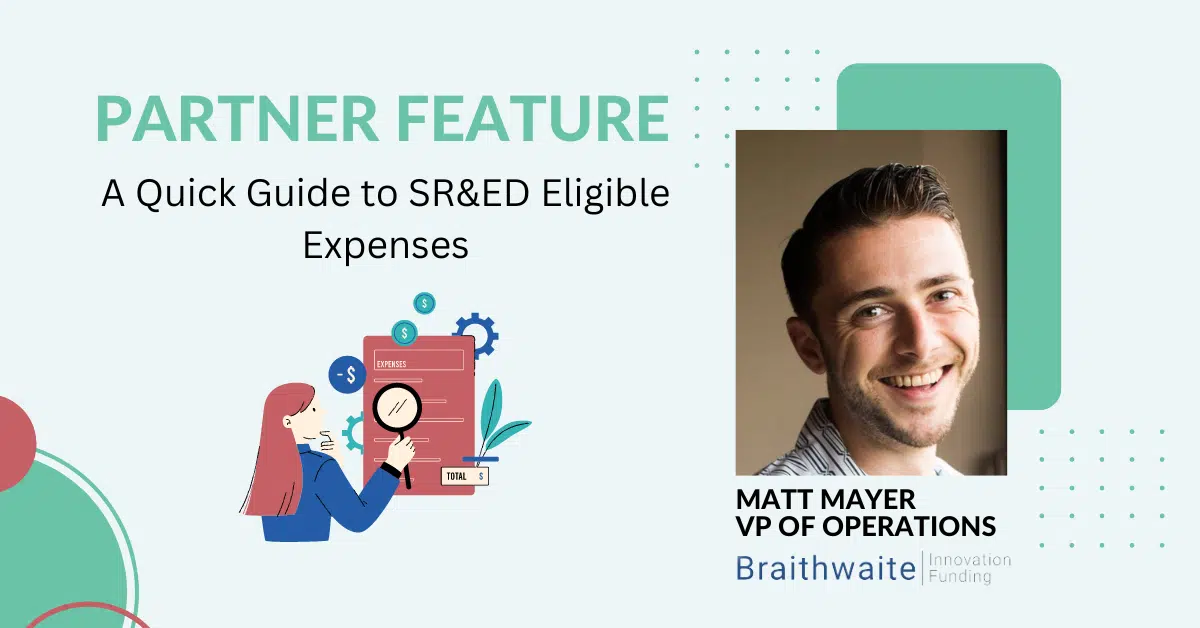Reading time: 7 minutes.
It’s a rising stress-related phenomenon, so learning how to avoid burnout is more crucial than ever. Although it’s usually associated with workers, with one-third of Canadian workers experiencing it, burnout is more common among founders and business owners than you may realize. It’s not that surprising when you consider how stressful and exhausting building a business is.
In this article, we’ll explore what burnout is, why it happens and how you can turn things around, recover and thrive if it happens to you.
What is burnout?
Burnout is a phenomenon that can leave sufferers in a debilitating state. People with burnout experience various physical, psycho-social and emotional symptoms, which can be grouped under three distinct areas.
- Exhaustion: constantly feeling depleted
- Cynicism: experiencing feelings of detachment from your job and people in your life
- Inefficacy: perceiving that you’re not performing in your role
It’s widely considered an occupational syndrome that affects workers, but business founders and even new parents or carers can also experience it.
Why it happens
According to the World Health Organization and psychologist and burnout expert Christine Maslach, burnout occurs when an individual experiences chronic stress. For start-up founders, potential sources of long-term stress are hiding in plain sight. Yes, there could be the exhilaration of working on new ideas, developing a cutting-edge technology or the freedom of being your own boss. But the constant hustle to source capital to keep your venture afloat, the race against time to get to market and ultimately, the buck stops with you for the success or failure of the business can take its toll. Indeed, 63% of the 300 entrepreneurs who took part in a recent survey by The Hustle said they are either experiencing or have experienced burnout. And financial concerns are top of the list of stressors.
Do you have burnout, or are you at risk?
Living through stressful events or having a high-pressure position doesn’t automatically equate to getting burnout. But it does boost your chances. So what’s the best way to assess whether you’ve reached the tipping point and crossed into burnout territory or are about to?
First published in 1981, the Maslach Burnout Inventory (MBI) was the world’s first measure of burnout based on scientific principles. It’s aligned with the World Health Organization’s definition of burnout and remains the gold standard for measuring burnout in studies around the globe. Therefore, it’s our top choice for assessing burnout and work-related stress. The MBI measures the three dimensions of burnout (exhaustion, cynicism and inefficacy) to create a score that rates where the respondent places on an engagement-burnout continuum. New research using the MBI has developed a more nuanced approach. It now uses the MBI measurement to generate five distinct profiles.
Burnout – When a respondent has negative scores across all three burnout dimensions of exhaustion, cynicism, and professional efficacy.
Overextended – When a respondent only has a strongly negative score on the exhaustion dimension.
Ineffective – When a respondent returns a strongly negative score on the professional efficacy dimension only.
Disengaged – When a respondent only has a strongly negative score on the cynicism dimension.
Engagement – When a respondent records strongly positive scores on exhaustion, cynicism, and professional efficacy.
This more granular analysis can help founders and business owners not only recognize burnout but also whether they or their team are at risk of burning out.
Avoiding burnout
We know that founders, business owners and senior executives are at risk of burnout in general. However, three long years of a pandemic have racked up uncertainty, and a recession on the horizon has piled on the pressure like never before. So let’s consider some easy-to-action practical steps you can take to help you and your team avoid burnout in the first place.
Take a step back
Assess your workload and define your priorities. Focus on the high-yield activities that move your venture forward and delegate or pause all non-essential or non-urgent tasks. It’s crucial to avoid working excessively long hours if your MBI score indicates you’re on the road to burnout.
Explore new avenues
Is there an opportunity for you and your team to work smarter, not harder? Be open to learning new skills or exploring new ideas or ways of doing things. It could help your business run more efficiently, free up time and take some of the weight off your shoulders. For example, if you’re struggling with your company’s financial stress, you could explore alternative financing, such as Venbridge’s SR&ED financing. You repay it with your expected refundable SR&ED tax credit, and it’s a great way to access the capital you need for your R&D and other business expenses.
Take breaks
Carving out time for regular breaks throughout the day is your secret weapon in your battle to stave off burnout. Mix up the type of breaks you have. It could be going for a walk, taking a yoga class or tackling a short sudoku puzzle. Whichever activity you choose, pick one that will help unplug your mind and help you to stay focused and productive throughout your workday.
Stay connected with people
Maintaining a human connection is crucial to your mental well-being. Keeping your head down all day at work and avoiding other people is the fast lane to burnout. So don’t be tempted to save time by avoiding your team or family members. It will cost you dearly in the long run.
How to recover
If it’s too late and your MBI score screams burnout, don’t despair. As serious as burnout can be, it’s not permanent, and you can bounce back completely. Recovery can take as little as six weeks or as long as two years, with six to nine months being the average time to recuperate. Consider the symptoms of burnout that you’re experiencing, then focus on a combination of the four pillars we’ve listed below to build your recovery.
Self-care
Make healthy eating, getting enough sleep and exercise your top priority. Take up a new hobby or pick up an old one and reduce or ideally avoid caffeine and alcohol.
Shift your mindset
Be kind to yourself and focus on what you’ve achieved each day rather than what you haven’t. Be your own cheerleader, not your worst critic. Practice gratitude and take up meditation.
Reduce your exposure to occupational stress
Stop multitasking and pace your workload so that working becomes more enjoyable again. Take breaks and actively disconnect from devices and your world of work so you can recharge and feel refreshed.
Focus on healthy relationships
Set boundaries with your team and stakeholders and stick to them. Identify toxic people and situations and actively avoid them. Pinpoint stress triggers in your life and reduce or eliminate them if possible.
Use these four tools to create and maintain your recovery from burnout. Now you know what burnout is and what it isn’t, as well as how you can prevent and recover from it, you can ensure burnout never returns. By following these tips and insights, you and your business can thrive now and into the future.




